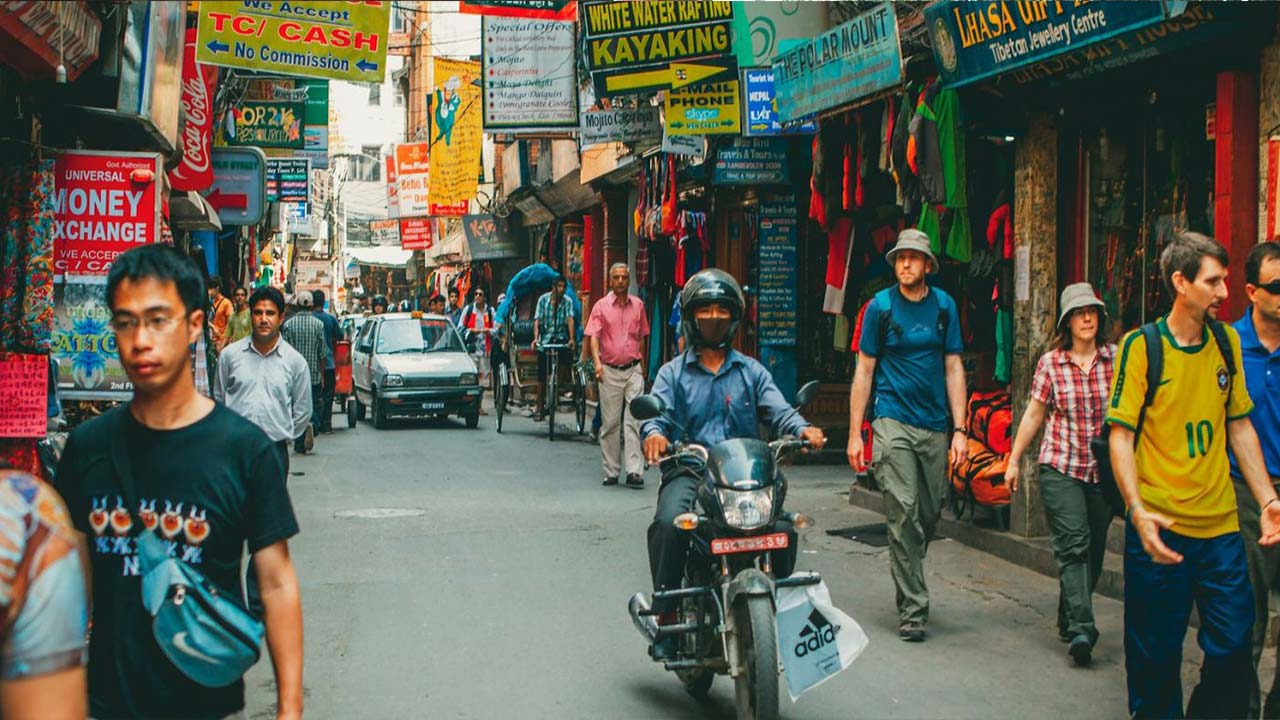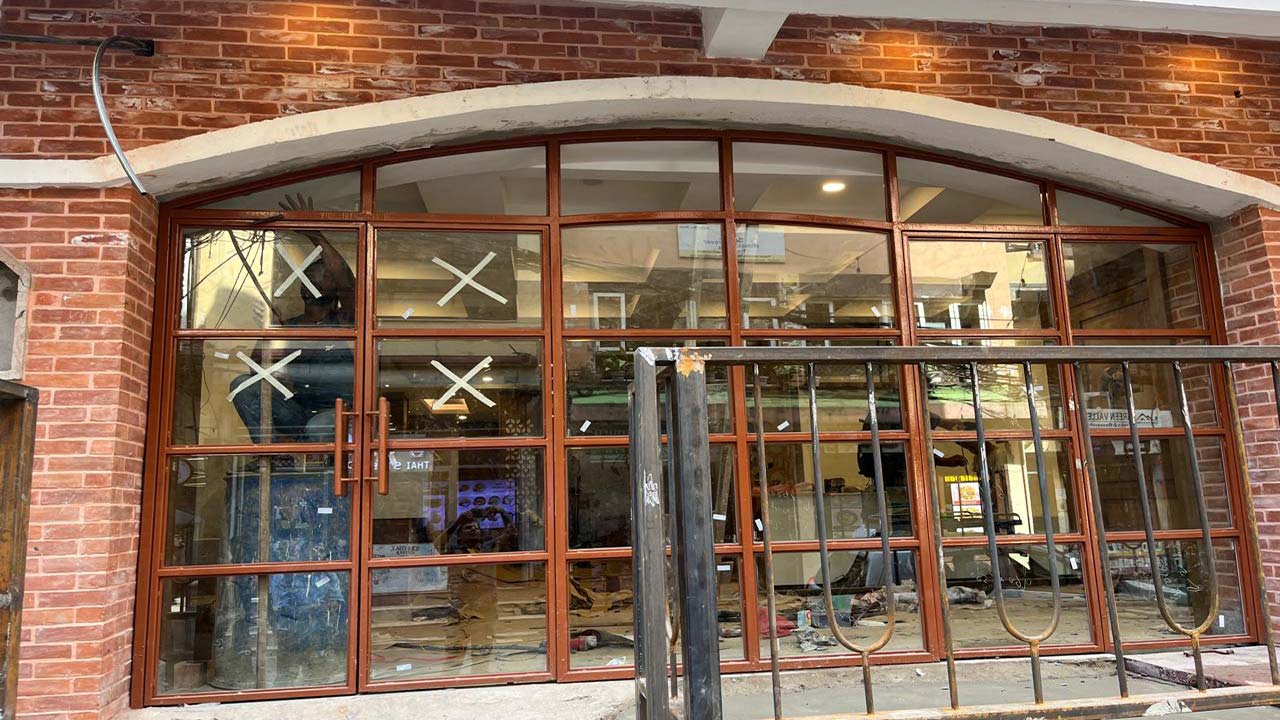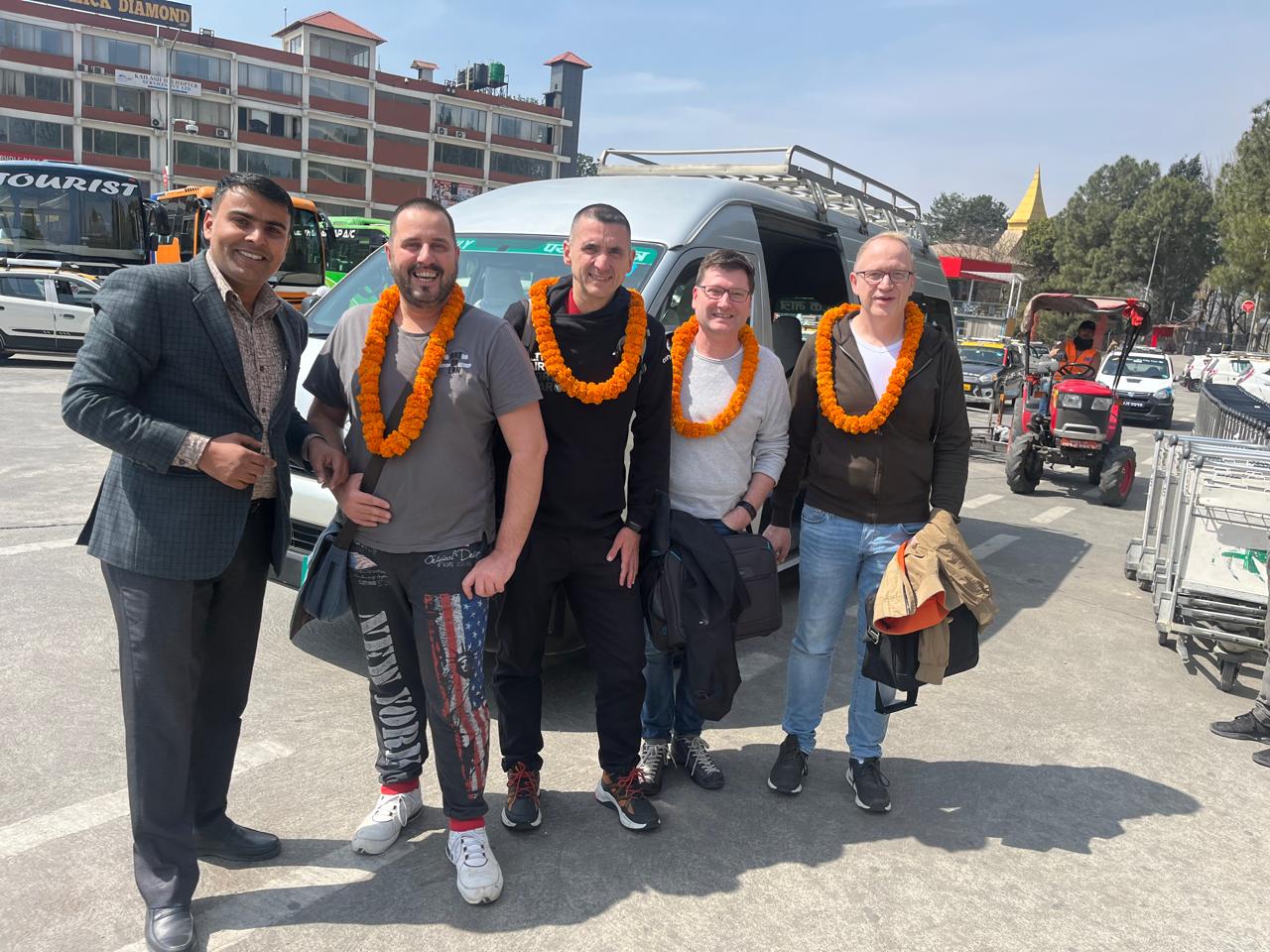Nepal is one country that certainly has earned the title of a dreamland for adventure seekers, cultural enthusiasts, and nature lovers alike. Beautiful Himalayan ranges, ancient temples, and tranquil lakes are all tempting offerings for experience seekers. Everything here is rather easily accessible and can be enjoyed without a hole in the pocket. Trek iconic trails, visit historical monuments, or experience the local culture while having fun in Nepal with a small budget.
Eco Holidays Nepal truly mean it when they say Eco-travel is affordable and possible, allowing you to pass through their beautiful country responsibly. Here, we have got a guide with expert tips and tricks on traveling Nepal on a budget while helping local communities and the environment.
Let's get started on your cheap adventure with Eco Holidays Nepal!
Choose to Go during the Off-Season
The peak tourist seasons in Nepal are during the spring (from March to May) and the autumn (September to November) period, which also calls for excellent weather for trekking and other outdoor activities. It still makes everything around that more expensive than it would be if you were to travel when fewer tourists visit the country. Summertime and wintertime are two off-peak seasons, and during these seasons, fares for flights and accommodations take dramatic drops. And locally, they also mean less traffic crowds and a quiet environment amid nature.

Stay in Budget Hotels
You can find different kinds of accommodations all over Nepal to suit most budgets: from budget guesthouses/hotels in the city for any backpacker to homestays in rural areas that suit every frugal visitor. Staying in a shared dormitory room, though, or in a simple private room in guesthouses, one pays as low as $5-$15 per head per night. Budget-conscious trekkers often find refuge in budget-friendly teahouses situated along popular trekking routes, offering simplified rooms and meals charging reasonable prices. One of the easiest ways to save some money while having a firsthand local experience of the country, described here: Collect the cherries from the world as well as use managed sites to cherry-pick from the best cultures where you are to stay.

Use Public Transport
Public transportation in Nepal is cheaper and also great for traveling around the city. It's available in the form of buses, microbuses, and local taxis as an affordable means of transport. Among tourists, those who travel from city to city will probably have the best choices with tourist buses. While most travelers extend local trips from Kathmandu or Pokhara cities, they take themselves to local buses or rickshaws because these are less expensive modes of transit. Always agree on the fare with the taxi driver before you engage him, or go for the local travel options for a more authentic and value-for-money experience.
Right Up to The Street
Eating as people do can be one of the best ways to save money in Nepal when traveling. Some of the most inexpensive and filling staples you will find are traditional Nepali food. At street vendors, food is deceivingly good, with delicious snacks, momos, sel roti, and chana costing under two dollars. If you're in Kathmandu or Pokhara, eat at local homes for some dhal bhat to get some hearty, fuel without much of a hit in the wallet. Ignoring most international restaurants pulls you into the hole of eating your meals in the place where you are traveling.
Plan Your Trekking Budget Wisely
Trekking in Nepal goes forward as a clear matter where there are simply enough numbers of trekking trails available. Yet a person can soon get killed speculating about this type of enterprise. Therefore, consider these frugal budget tips concerning one of the most expensive sports.
- Budget Treks: Among the popular trekking route sare Annapurna Circuit, Langtang Valley, or Ghorepani Poon Hill, you shall get excellent budget alternatives. Going for independent treks or with less support (porters and guides) will create an effect of reducing the total expenditure.
- Bookingly: Do not be part of packages provided by international agencies. Normally, dollars are much appreciated in payment, signed in pleasant agreement, likened tout together, preferring local teahouse owners, and they, and often their marked ticket, are far less costly. It is less expensive because it is booked.
- Travel as a Group: If possible, share the whole experience, and join group treks or find patrons to travel with fellow travelers. This saves you a lot of money on the cost of guides, porters, and transportation.

Bargain and Haggle
People in Nepal use bargaining extensively, be it at markets, or with taxi drivers. Do not hesitate to negotiate with a seller, because in many cases it is customary. It doesn’t matter whether you buy souvenirs in the vicinity of Thamel or wish to hire a guide for one of the local tours, in most cases you will indeed get more for your money, if you try and lower the price or visit several places.
Avoid the Cost of Tickets
Most of the landmarks that people travel to in Nepal, like national parks, monasteries, palaces, tombs, etc., are protected and these places require an entrance fee. Fee for each visit to these places is generally within the means of citizens, though, it is always important to estimate such expenses while planning a trip. Sometimes the designated sites extend this particular benefit to students, or a particular day is set aside for visitors to enter without being charged any fee, and the visitors cannot get bored. For example, some world heritage sites, centers of Kathmandu, have different prices for the Nepali residents.
Do Not Buy customer souvenirs.
Nepal abounds in interesting souvenirs, from handcrafted jewelry, and textiles to magnificently imprinted pictures, and products of art. However, those who want to economize should refrain from buying any product that is being bought at a premium rate in a region of heavy tourism such as Thamel. Resist the urge and delve into the marquees of smaller towns or villages across the countryside which possess locally made simple goods. It is encouraged to search for the local sellers of the handcrafted souvenirs in the region. This decision is excellent for both saving one’s expenditure and promoting the local business.
Be Light Yet Enjoy Your Journey
To avoid extra charges, a good way to pack, especially for local flights in the country, is to carry luggage lightly since it's quite smaller than those limits which are followed in international airlines. By traveling with a carry-on or lightweight backpack, you can save money and extra baggage charges, which can be more comfortable on the journey.
Pack Intelligently and Avoid Additional Charges
One of the pieces of advice is that packing intelligently can save one from incurring extra costs. Take, for instance, trekking in Nepal, because everything is generally deemed to be expensive for tourists; carry along all the things needed, like trekking boots, rain jackets, and thermal layers, rather than buying hiking gear. Although Nepal has rental trekking gears, it is still economical to buy your own before going to avoid renting such high-priced, sophisticated gear.
Free Activities
Nepal has free activities for those who travel on a shoestring budget. You can do the following:
- Trek or hike alone: These short free treks exist around cities like Pokhara, with a nice hike to the World Peace Pagoda that gives a spectacular view of the city and the Himalayas.
- The Visit of Temples or Monasteries and Local Market: The same applies to the free visit of Kathmandu's historic Durbar Square and Patan Durbar Square, even though you have to pay for some sites.

- Take a walk along the Boudhanath Stupa: Visit this UNESCO site where no entry fee is required, and one is bound to experience Nepal's spirituality.
Take Advantage of Eco-Friendly Travel Packages with Eco-Holidays Nepal
Eco-Holidays Nepal seeks to provide eco-responsible and inexpensive travel through the wonders of Nepal with minimal harm to the environment. It offers a variety of eco-friendly packages, trekking in natural unspoiled settings, and cultural experiences that reveal the rich traditions of Nepal so that people with different interests can experience Nepal in all its adventure, ecotourism, and cultural immersion.
Keeping the philosophy of the lessening of the environmental footprints and giving support to local communities in mind, Eco-Holidays Nepal designs truly responsible and affordable tours; wonderful tours that, via affordability, promise ample exposure to Nepal's folklore and geographical terrain but not in comfort. Hiking in the Himalayas and visiting local villages with Eco Holidays Nepal are the Sweet spot experiences of responsible travel, along with enriching experiences.
Nepal is a treasury of experience that awaits you to explore, and traveling on a budget does not mean that you have to sacrifice the magic it offers. From trekking up the Himalayas, through ancient temples, to soaking in the pure beauty of calm lakes and valleys, much can still be yielded in visiting one of the best scenic places in the world. Budget can further stretch your journeys even by traveling during off-seasons, taking cheap hostels, eating at inexpensive local restaurants, and traveling with reasonable uses in transport.
At Eco Holidays Nepal, we believe in putting our travel services to stimulate sustainable, eco-friendly travel experiences to explore the wonders of Nepal affordably. From budget trekking tours to cultural adventures spanning local diversity, we make all the trip possible within the boundaries of affordability and environmental responsibility.
So pack light, travel smart, and soak in beautiful Nepal's cultural and natural heritage. Your affordable adventure in this magical land is only a few steps away!
Happy travels, and see you on the road!
FAQs
How much would you consider carrying for budget travel in Nepal?
Budget travel in Nepal from $20 to $50 per day, depending on what activities will be performed, what kind of accommodation is chosen, and what kind of food is taken. For accommodation, there are many good cheap alternatives such as hostels or guesthouses; street food within food options will reduce the expense.
When is the best time for budget travel to Nepal?
The best time for budget travel in Nepal quite simply has to be the off-seasons of summer (June to August) and winter (December to February). Not only are costs reduced for flights and accommodation, tourist numbers also dwindle during these months of travel, offering you a relatively quieter experience.
Is traveling on a budget safe in Nepal?
Yes, for general tourism, especially budget ones. Just like any other country, a person should heed basic safety precautions. Preferably stay in populous areas, do not walk alone at night, and keep an eye or take care of your valuables.
How to save money in Nepal?
Opt for any budget guest house, homestay, or dormitory accommodation in the trekking-popular regions of the country to cut on categorically accommodation expenses. Rooms available in places like Kathmandu and Pokhara are starting from $5 to $15 a night.
What are the cheapest internal means of travelling in Nepal?
The cheapest option for internal travel in Nepal is local bus, minibus, and rickshaws. For intercity travel, there are tourist buses but otherwise walking and cycling are also excellent means of moving around small places.
Can I trek with just a guide or porter in Nepal?
Yes, all the trekking routes in Nepal, like Annapurna Circuit or Ghorepani Poon Hill, are capable for trekking individually. But if you are a beginner, then we recommend you take a guide; at least for the sake of precaution.
How do you save on food while you are in Nepal?
Eat local to save money. Fried momos, sel roti, and chana fill you up as cheap street food. Local eatery or household invitation for dinner, especially in Kathmandu and Pokhara, can add another dimension to self-feeding cheap Nepali cuisine.
Eco-friendly budget travel in Nepal?
Yes, Eco Holidays Nepal offers all kinds of trekking experiences and cultural activities suited to the eco-affording cost without much compromising environmental degradation. Sustainably responsible trekking and local-run guesthouses will further help strengthen the community and uphold the beauty of Nepal's native nature.
Escape tourist traps in Nepal?
Strongly avoid the popular tourist trap of overpriced hotels and restaurants, which is almost always found in areas like Thamel, Kathmandu. Instead, you can bargain with locals as much as possible, and retrieve your souvenirs from less-known villages for better and cheaper buys and a greater support for the local artisans.
What are some of the free things you can do in Nepal?
Among the several opportunities this country offers, free things include trekking to viewpoints like the World Peace Pagoda in Pokhara, entering temples and monasteries, or just walking through historical squares such as Durbar Square in Kathmandu. All can give some proximity to culture and nature, and they are free!



